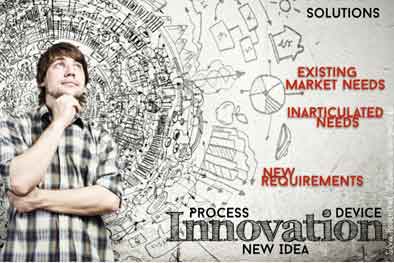What will be the most significant classroom innovation in the next 10 years?

What a catching blog post title. It might have caught your attention because of the keywords “the most significant” and “innovations” and a promise of a prediction to guide you into the future. Taking into consideration that devices, such as the iPhone, which changed an entire culture of anytime and anywhere connectedness, information flow, participation, creators, producers and learners, did not exist 10 years ago, I am venturing out to say that there is no accurate answer for what will be “significant” 10 years from today. I will disappoint you if you were looking for short, easy to follow instructions. Especially in education, planning for a “moving target” leaves us anxious, eager and willing to give our ear to anyone who promises us guidelines for that future we so desperately are looking for.
Taking a look at the definition of innovation in Wikipedia, I can only give you my best educated guess when we are looking for “a new idea, device or process” that “can be viewed as the application of better solutions” that meets “new requirements, inarticulated needs, or existing market needs.”
My vote for the most significant classroom innovation is the process of being able to “learn how to learn”. That process falls under the category of “existing market needs”, with a steadily increasing rate of importance in the years to come. This would be my best guess when working with so many unknown variables which are undoubtedly awaiting us. Possessing the ability of learning how to learn, will give us as teachers and our students the ability to grow in a world of continuously and exponentially increasing rate of change.
Learning how to learn embeds the notion of self-directeness and self-motivation as a learner. The view of seeing oneself as a life-long learner with a growth mindset, defined by Carol Dweck as “ intelligence that can be developed, which leads to a desire to learn” is inherent to the process of learning how to learn.
We are looking at becoming fluent in a work- and learnflow as a process to be able to flourish in a world with ever changing tools, platforms, networks and external innovations that will have a significant impact in the world of education.
►Learning how to learn will include knowing how to find filter, find, evaluate, categorize, store, remix and create information… no matter how much information is available or in what format, media or language it is available.
►Learning how to learn will mean how to work and learn with (not just about) people at a global scale… no matter how far the geographic distance, time zones, cultural and language differences.
Tech & Learning Newsletter
Tools and ideas to transform education. Sign up below.
►Learning how to learn will mean to be able to understand the differences and purpose of a variety of platforms and being able to harness the power of these networks… no matter the type of existing platforms, the need to migrate to new platforms or the necessity of fluently being able to switch between platforms for specific purposes.
►Learning how to learn will mean to adapt to new forms of media… no matter if this means letting go of nostalgic attachments or customary workflows of routine ways of reading, writing and communicating.
Although we don’t know exactly how the world will look like in 10 years, what “new requirements, inarticulated needs, or existing market needs” it will have, we do know that it will be different than our world today. The only way to prepare for that world is to possess the ability to adapt to change, have a growth mindset and be prepared to continue learning.
cross posted at langwitches.org/blog
Silvia Tolisano is a Curriculum21 faculty member, author of the book Digital Storytelling Tools for Educators and founder of the Around the World with 80 Schools project. Read more at http://langwitches.org/blog.
